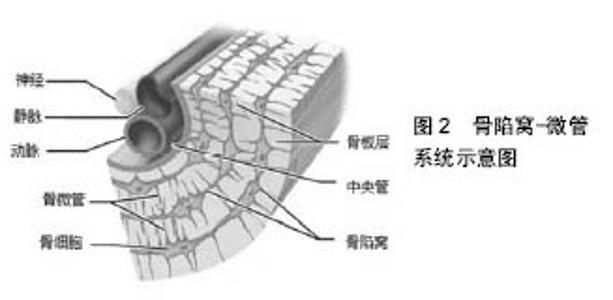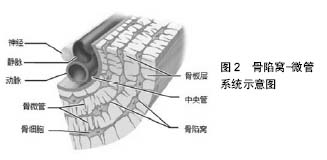Chinese Journal of Tissue Engineering Research ›› 2016, Vol. 20 ›› Issue (42): 6363-6370.doi: 10.3969/j.issn.2095-4344.2016.42.020
Previous Articles Next Articles
Research progress of metabolism and physiological functions of the lacunar-canalicular system
Shi Li-jun1, Gao Fu-qiang2, Sun Wei2
- 1Departmnt of Orthopedics, 2Department of Bone Joint Surgery, Osteonecrosis and Joint Reservation Reconstruction Center, China-Japan Friendship Hospital, Peking University, Beijing 100029, China
-
Received:2016-07-23Online:2016-10-14Published:2016-10-14 -
Contact:Sun Wei, Chief physician, Associate professor, Master’s supervisor, Doctoral supervisor, Department of Bone Joint Surgery, Osteonecrosis and Joint Reservation Reconstruction Center, China-Japan Friendship Hospital, Peking University, Beijing 100029, China -
About author:Shi Li-jun, Studying for master’s degree, Department of Orthopedics, China-Japan Friendship Hospital, Peking University, Beijing 100029, China Gao Fu-qiang, M.D., Departmnt of Orthopedics, China-Japan Friendship Hospital, Peking University, Beijing 100029, China Shi Li-Jun and Gao Fu-qiang contributed equally to this work. -
Supported by:the National Natural Science Foundation of China, No. 81372013, 81672236; the Project of China-Japan Friendship Hospital, No. 2013-MS-27; the Science and Technology Plan for Youth Talents of China-Japan Friendship Hospital, No. 2014-QNYC-A-06
CLC Number:
Cite this article
Shi Li-jun1, Gao Fu-qiang2, Sun Wei2. Research progress of metabolism and physiological functions of the lacunar-canalicular system[J]. Chinese Journal of Tissue Engineering Research, 2016, 20(42): 6363-6370.
share this article
| [1] Wang B,Lai X,Price C.Perlecan-containing pericellular matrix regulates solute transport and mechanosensing within the osteocyte lacunar-canalicular system.J Bone Miner Res.2014;29(4):878-891. [2] Komori T.Mouse models for the evaluation of osteocyte functions.J Bone Metab.2014;21(1):55-60. [3] Lai X, Price C, Modla S, et al.The dependences of osteocyte network on bone compartment,age,and disease. Bone Res.2015;3:15009. [4] Cardoso L, Fritton SP, Gailani G, et al.A review of recent advances in the assessment of bone porosity,permeability, and interstitial fluid flow.J Biomech.2013 18;46(2):253-265. [5] Price C, Zhou X, Li W, et al.Real-Time Measurement of Solute Transport Within the Lacunar-Canalicular System of Mechanically Loaded Bone: Direct Evidence for Load-Induced Fluid Flow. J Bone Miner Res. 2011; 26(2):277-285. [6] Cowin SC,Cardoso L.Blood and interstitial flow in the hierarchical pore space architecture of bone tissue.J Biomech.2015;48(5):842-54. [7] Gardinier JD, Townend CW, Jen KP,et al.In situ permeability measurement of the mammalian lacunarcanalicular system.Bone. 2010;46(4): 1075-1081. [8] Manolagas SC, Parfitt AM.Michael Parfitt. For whom the bell tolls: distress signals from long-lived osteocytes and the pathogenesis of metabolic bone diseases.Bone.2013;54(2):272-278. [9] Nakashima T.Stress and cell communication between bone cells.Clin Calcium.2013;23(11):1595-1603. [10] Komori T.Mechanism of bone mass regulation by mechanical stress.Clin Calcium.2013;23(11):1559-1567. [11] Cardoso L,Fritton SP,Gailani G,et al.Advances in assessment of bone porosity, permeability and interstitial fluid flow.J Biomech.2013;46(2):253-265. [12] Benalla M,Palacio-Mancheno PE,Fritton SP,et al.Dynamic permeability of the lacunar-canalicular system in human cortical bone.Biomech Model Mechanobiol.2014;13(4):801-812. [13] Li W, You L, Schaffler MB, Wang L.The dependency of solute diffusion on molecular weight and shape in intact bone.Bone.2009;45(5):1017-1023. [14] Wang B, Zhou X, Price C, et al. Quantifying load-induced solute transport and solute-matrix interaction within the osteocyte lacunar-canalicular system.J Bone Miner Res.2013;28(5):1075-1086. [15] Weinbaum S, Duan Y, Thi MM, et al.An Integrative Review of Mechanotransduction in Endothelial, Epithelial (Renal) and Dendritic Cells (Osteocytes).Cell Mol Bioeng.2011;4(4):510-537. [16] Qin YX,Hu M.Mechanotransduction in musculoskeletal tissue regeneration: effects of fluid flow, loading, and cellular-molecular pathways.Biomed Res Int.2014; 2014:863421. [17] Wu D,Schaffler MB,Weinbaum S,et al.Matrix- dependent adhesion mediates network responses to physiological stimulation of the osteocyte cell process. Proc Natl Acad Sci US A.2013;110(29):12096-12101. [18] Kamioka H,Yamashiro T.Mechanosensitivity of osteocytes.Clin Calcium.2012;22(5):697-704. [19] Ren L,Yang P,Wang Z,et al.Biomechanical and biophysical environment of bone from the macroscopic to the pericellular and molecular level.J Mech Behav Biomed Mater.2015;50:104-122. [20] Li W, Gardinier JD, Price C,et al.Does blood pressure enhance solute transport in the bonelacunar-canalicular system? Bone.2010; 47(2):353-359. [21] Klein-Nulend J,Bakker AD,Bacabac RG,et al. Mechanosensation and transduction in osteocytes. Bone.2013;54(2):182-190. [22] Florencio-Silva R,Sasso GR,Sasso-Cerri E,et al. Biology of Bone Tissue: Structure, Function, and Factors That Influence Bone Cells.Biomed Res Int. 2015;2015:421746. [23] Li P,Liu C,Hu M,et al.Fluid flow-induced calcium response in osteoclasts:signaling pathways.Ann Biomed Eng.2014;42(6):1250-1260. [24] Klein-Nulend J, van der Plas A, Semeins CM,et al. Klein-Nulend, van der Plas, Semeins,et al.Sensitivity of osteocytes to biomechanical stress in vitro.FASEB J. 1995;9(5):441-445. [25] Goldring SR.The osteocyte: key player in regulating bone turnover.RMD Open.2015;1(Suppl 1):e000049. [26] Chen H,Senda T,Kubo KY.The osteocyte plays multiple roles in bone remodeling and mineral homeostasis. Med Mol Morphol.2015;48(2):61-68. [27] Klein-Nulend J,van Oers RF,Bakker AD,et al.Bone cell mechanosensitivity, estrogen deficiency, and osteoporosis.J Biomech.2015;48(5):855-865. [28] Moriishi T,Fukuyama R,Ito M,et al.Osteocyte network; a negative regulatory system for bone mass augmented by the induction of Rankl in osteoblasts and Sost in osteocytes at unloading.PLoS One.2012;7(6):e40143. [29] Vaughan TJ,Mullen CA,Verbruggen SW,et al.Bone cell mechanosensation of fluid flow stimulation: a fluid-structure interaction model characterising the role integrin attachments and primary cilia.Biomech Model Mechanobiol.2015;14(4):703-718. [30] Schaffler MB, Cheung WY, Majeska R,et al.Osteocytes: Master Orchestrators of Bone.Calcif Tissue Int.2014; 94(1): 5-24. [31] Fritton SP, Weinbaum S. Fluid and Solute Transport in Bone: Flow-Induced Mechanotransduction. Annu Rev Fluid Mech.2009; 41:347-374. [32] Gardinier JD,Gangadharan V,Wang L,et al.Hydraulic Pressure during Fluid Flow Regulates Purinergic Signaling and Cytoskeleton Organization of Osteoblasts.Cell Mol Bioeng.2014;7(2):266-277. [33] Govey PM,Jacobs JM,Tilton SC,et al.Integrative transcriptomic and proteomic analysis of osteocytic cells exposed to fluid flow reveals novel mechano-sensitive signaling pathways.J Biomech. 2014;47(8):1838-1845. [34] Aiello BR,Iriarte-Diaz J,Blob RW. Bone strain magnitude is correlated with bone strain rate in tetrapods: implications for models ofmechanotransduction.Proc Biol Sci.2015;282(1810).pii:20150321. [35] Wijeratne SS,Martinez JR,Grindel BJ,et al.Single molecule force measurements of perlecan/HSPG2: A key component of the osteocyte pericellular matrix. Matrix Biol.2015.[Epub ahead of print] [36] Thi MM, Suadicani SO, Schaffler MB, et al. Mechanosensory responses of osteocytes tophysiological forces occur along processes andnot cell body and require αVβ3 integrin.Proc Natl Acad Sci U S A.2013;110(52):21012-21017. [37] Wu D,Schaffler MB,Weinbaum S,et al.Matrix-dependent adhesion mediates network responses to physiological stimulation of the osteocyte cell process. Proc Natl Acad Sci US A.2013;110(29):12096-120101. [38] Wang L, Dong J, Xian CJ.Strain Amplification Analysis of an Osteocyte under Static and Cyclic Loading: A Finite Element Study.Biomed Res Int.2015; 2015: 376474. [39] Verbruggen SW, Vaughan TJ, McNamara LM.Strain amplification in bone mechanobiology: a computational investigation of the in vivomechanics of osteocytes.J R Soc Interface.2012; 9(75):2735–2744. [40] Bonivtch AR, Bonewald LF, Nicolella DP.Tissue strain amplification at the osteocyte lacuna: a microstructural finite element analysis.J Biomech.2007;40(10):2199-2206. |
| [1] | Zhang Tongtong, Wang Zhonghua, Wen Jie, Song Yuxin, Liu Lin. Application of three-dimensional printing model in surgical resection and reconstruction of cervical tumor [J]. Chinese Journal of Tissue Engineering Research, 2021, 25(9): 1335-1339. |
| [2] | Zeng Yanhua, Hao Yanlei. In vitro culture and purification of Schwann cells: a systematic review [J]. Chinese Journal of Tissue Engineering Research, 2021, 25(7): 1135-1141. |
| [3] | Xu Dongzi, Zhang Ting, Ouyang Zhaolian. The global competitive situation of cardiac tissue engineering based on patent analysis [J]. Chinese Journal of Tissue Engineering Research, 2021, 25(5): 807-812. |
| [4] | Wu Zijian, Hu Zhaoduan, Xie Youqiong, Wang Feng, Li Jia, Li Bocun, Cai Guowei, Peng Rui. Three-dimensional printing technology and bone tissue engineering research: literature metrology and visual analysis of research hotspots [J]. Chinese Journal of Tissue Engineering Research, 2021, 25(4): 564-569. |
| [5] | Chang Wenliao, Zhao Jie, Sun Xiaoliang, Wang Kun, Wu Guofeng, Zhou Jian, Li Shuxiang, Sun Han. Material selection, theoretical design and biomimetic function of artificial periosteum [J]. Chinese Journal of Tissue Engineering Research, 2021, 25(4): 600-606. |
| [6] | Liu Fei, Cui Yutao, Liu He. Advantages and problems of local antibiotic delivery system in the treatment of osteomyelitis [J]. Chinese Journal of Tissue Engineering Research, 2021, 25(4): 614-620. |
| [7] | Li Xiaozhuang, Duan Hao, Wang Weizhou, Tang Zhihong, Wang Yanghao, He Fei. Application of bone tissue engineering materials in the treatment of bone defect diseases in vivo [J]. Chinese Journal of Tissue Engineering Research, 2021, 25(4): 626-631. |
| [8] | Zhang Zhenkun, Li Zhe, Li Ya, Wang Yingying, Wang Yaping, Zhou Xinkui, Ma Shanshan, Guan Fangxia. Application of alginate based hydrogels/dressings in wound healing: sustained, dynamic and sequential release [J]. Chinese Journal of Tissue Engineering Research, 2021, 25(4): 638-643. |
| [9] | Chen Jiana, Qiu Yanling, Nie Minhai, Liu Xuqian. Tissue engineering scaffolds in repairing oral and maxillofacial soft tissue defects [J]. Chinese Journal of Tissue Engineering Research, 2021, 25(4): 644-650. |
| [10] | Xing Hao, Zhang Yonghong, Wang Dong. Advantages and disadvantages of repairing large-segment bone defect [J]. Chinese Journal of Tissue Engineering Research, 2021, 25(3): 426-430. |
| [11] | Chen Siqi, Xian Debin, Xu Rongsheng, Qin Zhongjie, Zhang Lei, Xia Delin. Effects of bone marrow mesenchymal stem cells and human umbilical vein endothelial cells combined with hydroxyapatite-tricalcium phosphate scaffolds on early angiogenesis in skull defect repair in rats [J]. Chinese Journal of Tissue Engineering Research, 2021, 25(22): 3458-3465. |
| [12] | Wang Hao, Chen Mingxue, Li Junkang, Luo Xujiang, Peng Liqing, Li Huo, Huang Bo, Tian Guangzhao, Liu Shuyun, Sui Xiang, Huang Jingxiang, Guo Quanyi, Lu Xiaobo. Decellularized porcine skin matrix for tissue-engineered meniscus scaffold [J]. Chinese Journal of Tissue Engineering Research, 2021, 25(22): 3473-3478. |
| [13] | Mo Jianling, He Shaoru, Feng Bowen, Jian Minqiao, Zhang Xiaohui, Liu Caisheng, Liang Yijing, Liu Yumei, Chen Liang, Zhou Haiyu, Liu Yanhui. Forming prevascularized cell sheets and the expression of angiogenesis-related factors [J]. Chinese Journal of Tissue Engineering Research, 2021, 25(22): 3479-3486. |
| [14] | Liu Chang, Li Datong, Liu Yuan, Kong Lingbo, Guo Rui, Yang Lixue, Hao Dingjun, He Baorong. Poor efficacy after vertebral augmentation surgery of acute symptomatic thoracolumbar osteoporotic compression fracture: relationship with bone cement, bone mineral density, and adjacent fractures [J]. Chinese Journal of Tissue Engineering Research, 2021, 25(22): 3510-3516. |
| [15] | Liu Liyong, Zhou Lei. Research and development status and development trend of hydrogel in tissue engineering based on patent information [J]. Chinese Journal of Tissue Engineering Research, 2021, 25(22): 3527-3533. |
| Viewed | ||||||
|
Full text |
|
|||||
|
Abstract |
|
|||||

